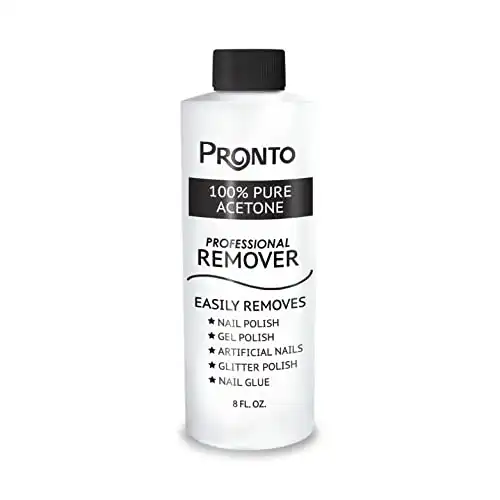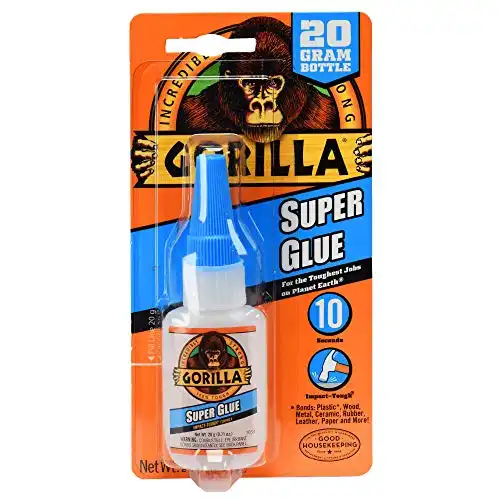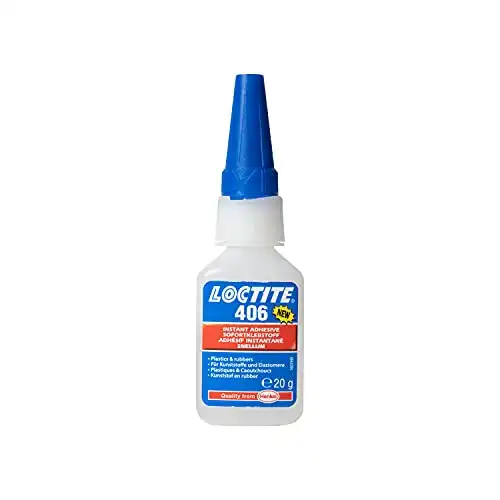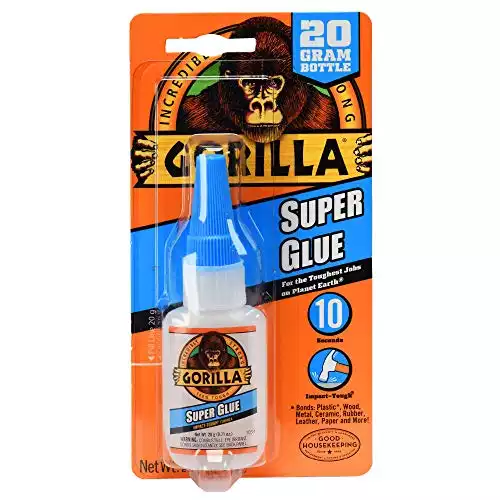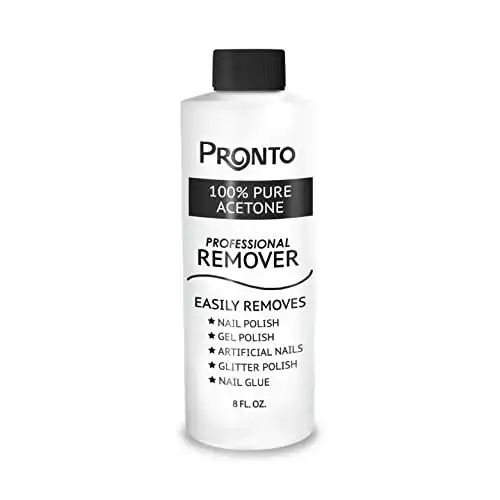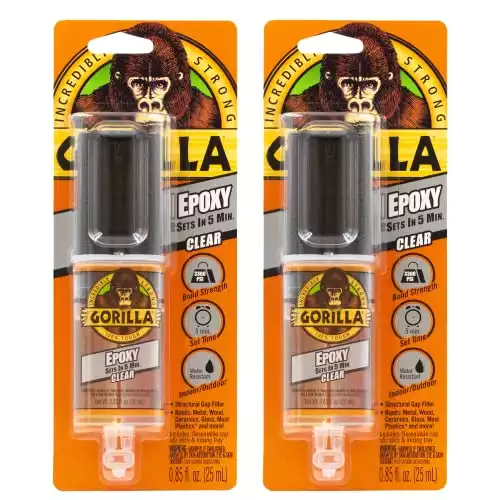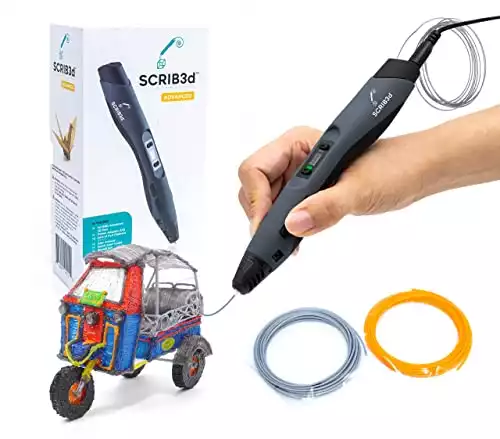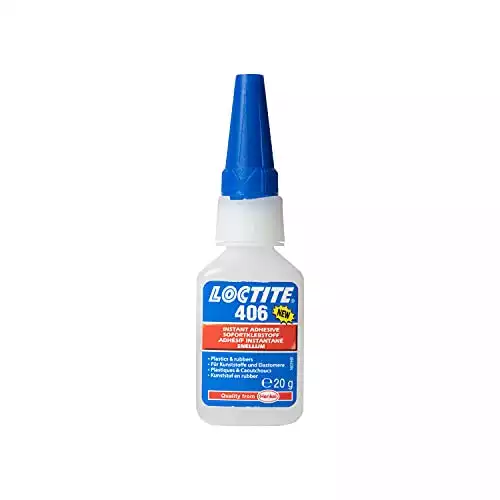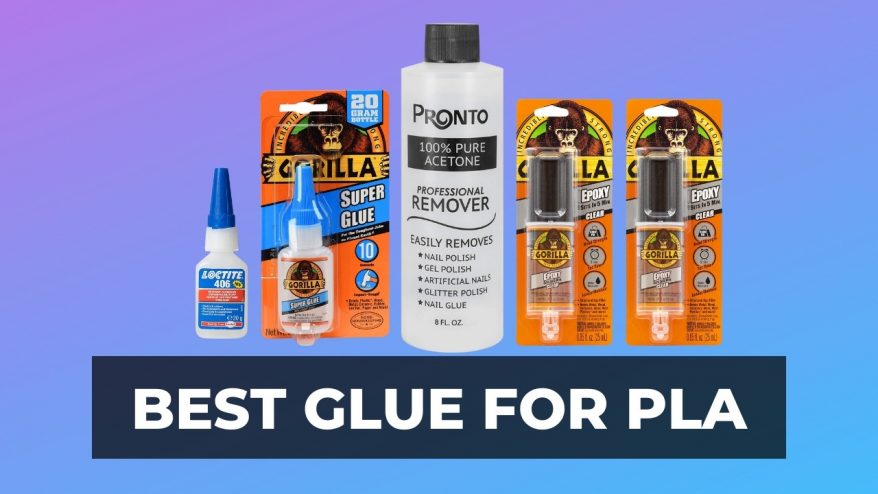
3D printing is a craft. We make useful, innovative things out of nothing but ingenuity and a little bit of filament. But a little glue for PLA 3D prints to hold things together never hurt anyone.
|
|
|
|
|
$9.99 ($1.25 / Fl Oz)
|
$7.98
|
|
Best Glue for 3D Prints
- Gorilla Super Glue: Best for most 3D printed parts
- Pronto 100% Pure Acetone: Best for PLA and ABS
- Gorilla 2 Part Epoxy: Best for PLA, ABS and PETG
- SCRIB3D Advanced 3D Printing Pen: Best when using the same filament
- Loctite 406 super glue: Best for TPU and Nylon
3DSourced is reader-supported. When you buy through links on our site, we may earn an affiliate commission. Learn more
Why Glue 3D Printed Parts?
Your 3D Printer is Too Small
If you are the proud owner of a small 3D printer, you have probably made enough guitar picks and mini figurines to last a lifetime. At some point, you will want to branch out into bigger projects.
To make a finished product bigger than your printer’s maximum print size capacity, you will need to print it in several parts and glue them together into one large piece.
You could make something like a bed tray, to hold your laptop or eat breakfast in bed. With a small printer, you might need to print it in a few pieces and glue them all together.
Assembling Multiple Printed Parts Together
There are lots of exciting projects that can be 3D printed, but many of them require some assembly to reach their full awesomeness potential.
You might need to print a bunch of specific little pieces and glue them together to get the end product you want.
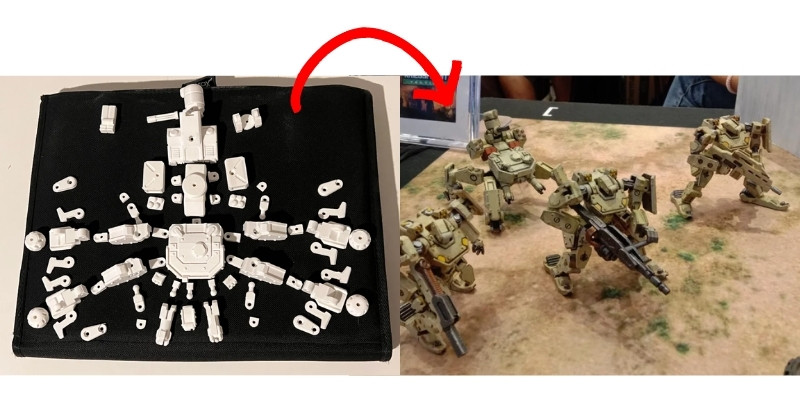
Creative nerds everywhere have been learning how to 3D print as a way to make elaborate cosplays to wear to conventions. They sometimes spend months printing hundreds or even thousands of separate parts, of all different sizes.
Cosplayers print everything from large plates of armor, down to the smallest embellishments, and then glue them all together and add a little bit of paint to finish off the look.
These complicated 3D printed projects wouldn’t be possible without glue to stick everything together.
Things to consider with which glue you choose
Sturdiness
Some adhesives hold up better than others. Consider your finished piece’s use. If it is a decorative vase that will only ever sit on a shelf, you might be okay with a soft hold.
On the other hand, if you are printing a tool to use professionally, you have to be able to rely on it. The glue needs to be sturdy for the piece to work.
Finished Look
Different kinds of adhesives leave different-looking seams. If you want the seam to be totally invisible, like the two parts were printed as one, you will need a thin adhesive that won’t bubble.
If that’s not a priority for you, or if you’re working with a seam that will eventually be hidden, you might choose a glue that blobs a little as it dries.
Flexibility
When you’re printing with a hard filament like PLA, you will want glue that holds a rigid seam. There may also be times when you need to glue on a flexible filament, and you will want to make sure that the adhesive you are using will bend with your part.
Can you glue PLA plastic?
You can glue PLA plastic. Gluing PLA pieces together is reliable, safe, and easy. You’ll want to consider sturdiness, seam visibility, and flexibility when you select a PLA adhesive. Super glue is the best adhesive choice in most cases, but you may choose another adhesive based on your needs. Prep the printed parts for a bond you can trust.
Best Glue for 3D Printing
Super Glue
- Check latest price here: Gorilla Super Glue
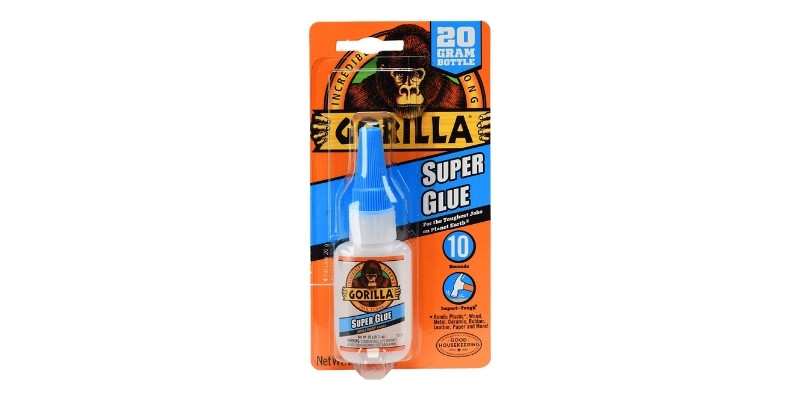
Pros
Strong and sturdy.
Easy to use and widely accessible.
Quick drying.
Cons
May not work well on some TPU and Nylon projects.
Hard and rigid when dry.
The technical name for super glue is Cyanoacrylate. Super glue is the best glue for most projects. It is easy to use, and widely accessible. If you don’t already have a bottle in your makerspace, super glue is available on Amazon and at most supply stores for cheap.
Super glue is a perfect glue for 3D prints because it is strong and stays sturdy over time. You can rely on superglue to hold your pieces together even through use and wear and tear.
If you are careful with your application, you can get very clean seams. You only need a thin layer of super glue for it to be effective, so there is no need to use so much glue it bulges over the side of your seams.
Super glue is a perfect choice for PLA and ABS plastic filaments. However super glue may not work well on some TPU and Nylon projects because it is hard and rigid when dry. If you want to super glue a flexible filament make sure you choose a flexible drying super glue.
Super glue is quick drying. Your parts will fix together quickly, so line your pieces up before you apply a layer of glue. Be careful to press the parts together correctly the first time so that you don’t have to start over because they’re glued in the wrong place. Always wear gloves – you don’t want to super glue your fingers together!
Gorilla Glue is the gold standard in super glue. It dries fully in only 10 seconds, holds tight even under impact, and has an anti-clog cap so that you can buy a bottle once and use it again and again for 3D printing projects. The formula is thin enough to use on small details but thick enough that it will stay in place without dripping. Gorilla Super Glue is the ideal glue for most 3D printed parts.
Acetone
- Check latest price here: Pronto 100% Pure Acetone

Pros
Effective adhesive for PLA and ABS.
Extremely sturdy hold.
Great for smoothing.
Cons
Not suitable for PETG, TPU, or Nylon filaments.
Flammable.
Acetone is an unexpected, but effective adhesive for 3D printing. Acetone works on PLA and ABS, but isn’t a good choice for PETG or TPU or Nylon.
Acetone works by “melting” the surface of the parts- dissolving a layer of filaments. Once the plastic is soft, you can stick them together, and when they reharden together they will bind like one piece.
This method gives an extremely sturdy hold. The two pieces of plastic fuse into one and won’t move anywhere. It is like they were printed as one piece all along.
Another advantage of acetone is that the seam between the two parts will be very clean. It’s possible with two matching pieces to have a seam that is completely invisible. If a hidden seam is important for your project, acetone is the best choice.
Don’t use acetone on thin pieces. Avoid using too much or letting it soak for too long, or it may dissolve too much plastic and you’ll end up with a compromised part.
Acetone is flammable- keep it away from open flame or anything that might spark.
Acetone is also great for smoothing.
How to Glue 3D prints with acetone
- Use a paintbrush to apply a thin layer of acetone to both surfaces.
- The plastic will start to get tacky right away, but it takes a few minutes for the full “melting” effect.
- Press the pieces together and set them aside for a few hours to dry. For additional security, you can weigh the parts down or clamp them together while they dry.
- Once your pieces are hardened, they will be inseparable.
You’ll want to choose a bottle of acetone that is 100% concentrated. This one comes in three different sizes so that you can buy the right amount for your needs.
Epoxy
Does epoxy bond well to PLA?
Epoxy bonds well to PLA plastic and ABS plastic. Epoxy is hard once dry, which makes it a good glue and filler for 3D prints. It can also be used with PETG filament. Epoxy will bond well to TPU filament, but should be avoided if you want to keep your finished part flexible after the epoxy dries.
Overview
- Check latest price here: Gorilla 2 Part Epoxy
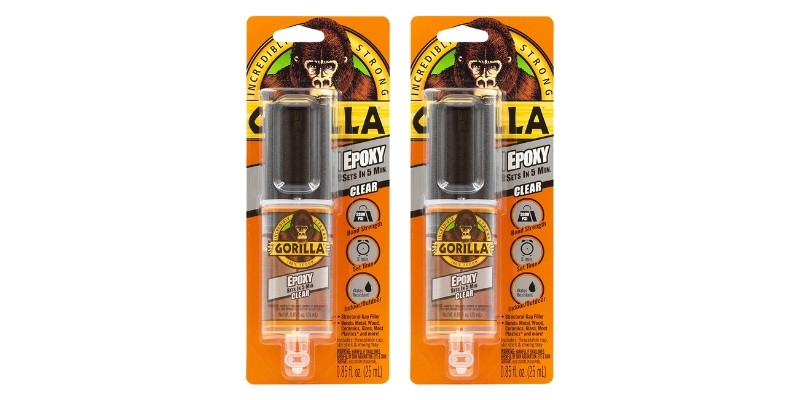
Pros
Dries very fast.
Can fill small holes, seams, or imperfections on prints.
Cons
Emits toxic fumes which require proper ventilation and a good mask.
Epoxy is a very effective 3D printing glue. It dries very hard so your parts will not break from each other once the epoxy sets. Epoxy is special because it’s not only glue, it can also be used to fill in small holes, seams, or imperfections on your 3D printed models. It can also smooth the surface of your prints.
Epoxy is trickier to use than some other adhesives. It is toxic to breathe in, so proper ventilation and a good mask are necessary while working. You also have to mix two types of chemicals- the epoxy resin and a hardener- at a specific ratio. Then the mixture has to be used within a few minutes.
How to Glue 3D prints with Epoxy
- Make sure your workshop is well ventilated. Wear a mask and gloves.
- Follow the directions that come with your epoxy. You will normally be instructed to mix the contents of two tubes and stir them well.
- Apply a thin layer to the surfaces
- Press the pieces together. Clamp or weigh them for 24 hours to allow the epoxy to cure
Gorilla Epoxy sets clear in five minutes. It comes in an easy-to-dispense syringe to make sure you get an equal ratio of epoxy resin and hardener.
Sets in 5 Minutes, .85 Ounce Syringe, Clear, (Pack of 2)
3D Pens for Gluing PLA
Overview
- Top pick: SCRIB3D Advanced 3D Printing Pen
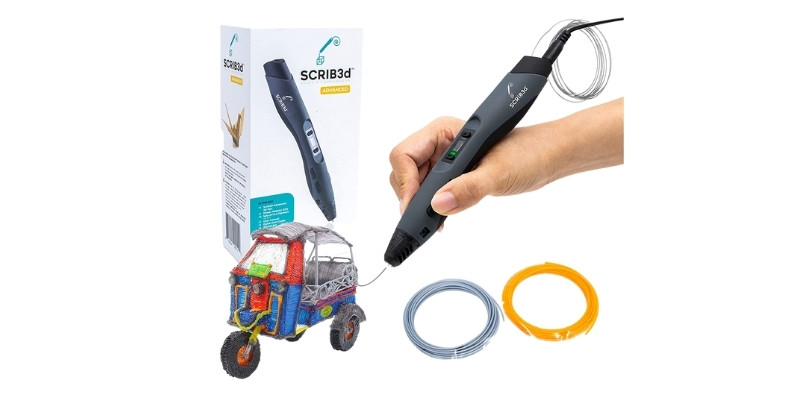
Pros
Seamless connection for two 3D printed parts.
Fills any gaps in a printed part.
Cons
Not very strong.
3D pens are an excellent way to connect two 3D printed parts. As long as you use the same filament, the finished product will look like it was printed in one piece because it is all the same material. 3D pens can also fill in any gaps in a printed part.
Be sure to use a thick layer of filament so that you can get a sturdy bond between pieces.
The SCRIB3D Advanced 3D Printing Pen is a less expensive option for a 3D pen if you are purchasing a new one.
Be sure to check out our guide on the best 3D pens to select one that will suit all of your needs.
How to glue 3D printed parts:
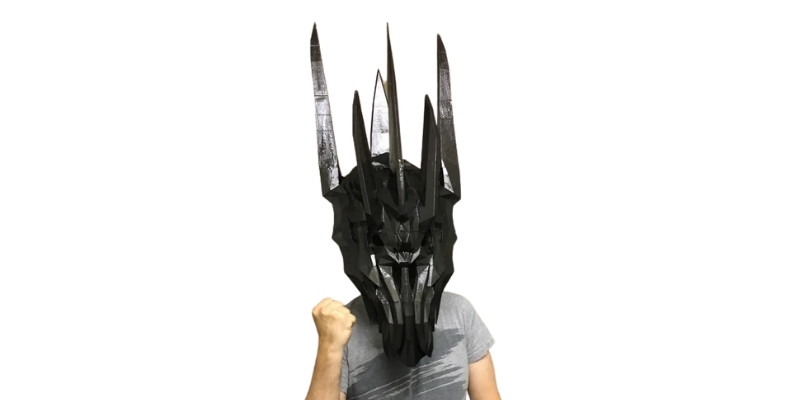
How to glue PLA and ABS filaments
PLA and ABS plastic are the easiest filaments to glue. You can choose almost any adhesive for PLA and ABS parts. With just a little bit of simple prep, you will have parts ready to fuse together.
- Always wear gloves. Some of these adhesives are sticky enough to glue your fingers together, so it is important to take precautions.
- Sand the parts to be glued with fine-grit sandpaper. Sanding gets rid of bumps that might prevent the whole surface from attaching. Sanding also creates texture for the adhesive to cling to.
- Clean the whole surface with alcohol. You don’t want any dust left over from your sanding or your glue might not be able to stick to the actual surface.
- Once you are all prepped, follow the directions for your chosen adhesive.
How to glue PETG filaments
PETG is a polyester filament. It has low surface energy, which means adhesives will stay on the outside of the material rather than soaking in to bond securely. That makes it trickier to effectively glue than PLA or ABS, but it can still be glued using a few different methods.
- Use a 3D pen with PETG filament to “weld” the two parts together. Since the pen is using the same filament, it works as an excellent bonding material.
- Super glue will also work on PETG, but the bond may not be as strong.
How to glue TPU and nylon filaments
TPU and nylon filaments are flexible after printing, especially TPU. You’ve probably printed with TPU for its flexible traits, so avoid hard-drying glues that will restrain your part. There are several flexible adhesive options for gluing TPU and nylon.
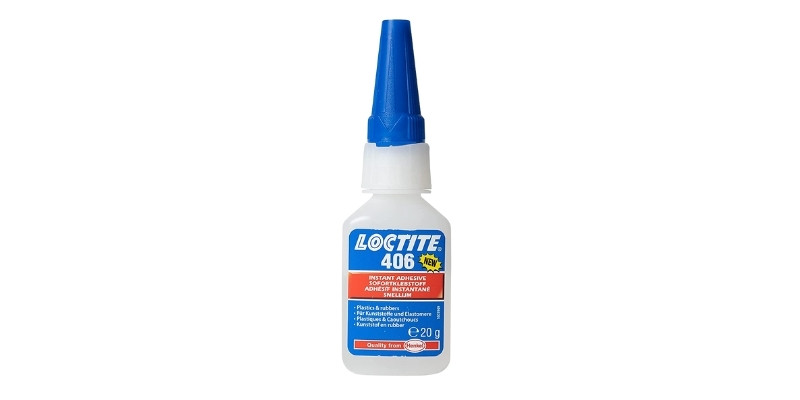
- Choose a super glue specifically formulated to be flexible. A product like Loctite 406 super glue will work well on most surfaces.
- Hot glue has a lot more give when it dries than some other adhesives. It can be a convenient choice if you already have a hot glue gun in your studio.
- If you don’t mind a rigid seam, normal super glue will adhere well to TPU and nylon.
What is the best glue for PLA plastic?
The best glue for PLA 3D prints is super glue – technically known as cyanoacrylate. Super glue is easy to use, is quick setting, and creates a sturdy bond. Acetone, epoxy, hot glue, and 3D pens can also be used as an adhesive for PLA. You can glue 3D printed parts together for a strong finished product.
Related Posts:
